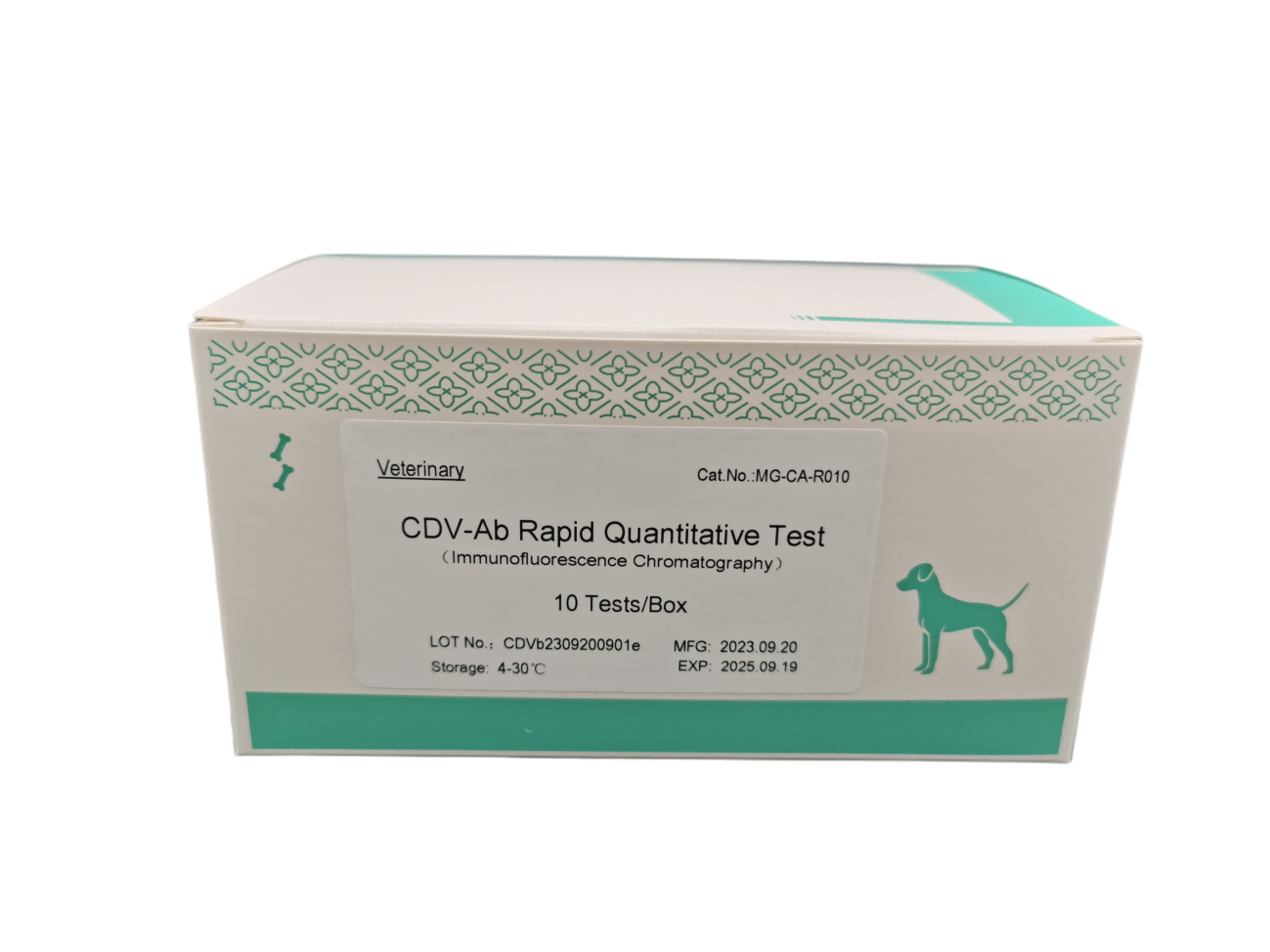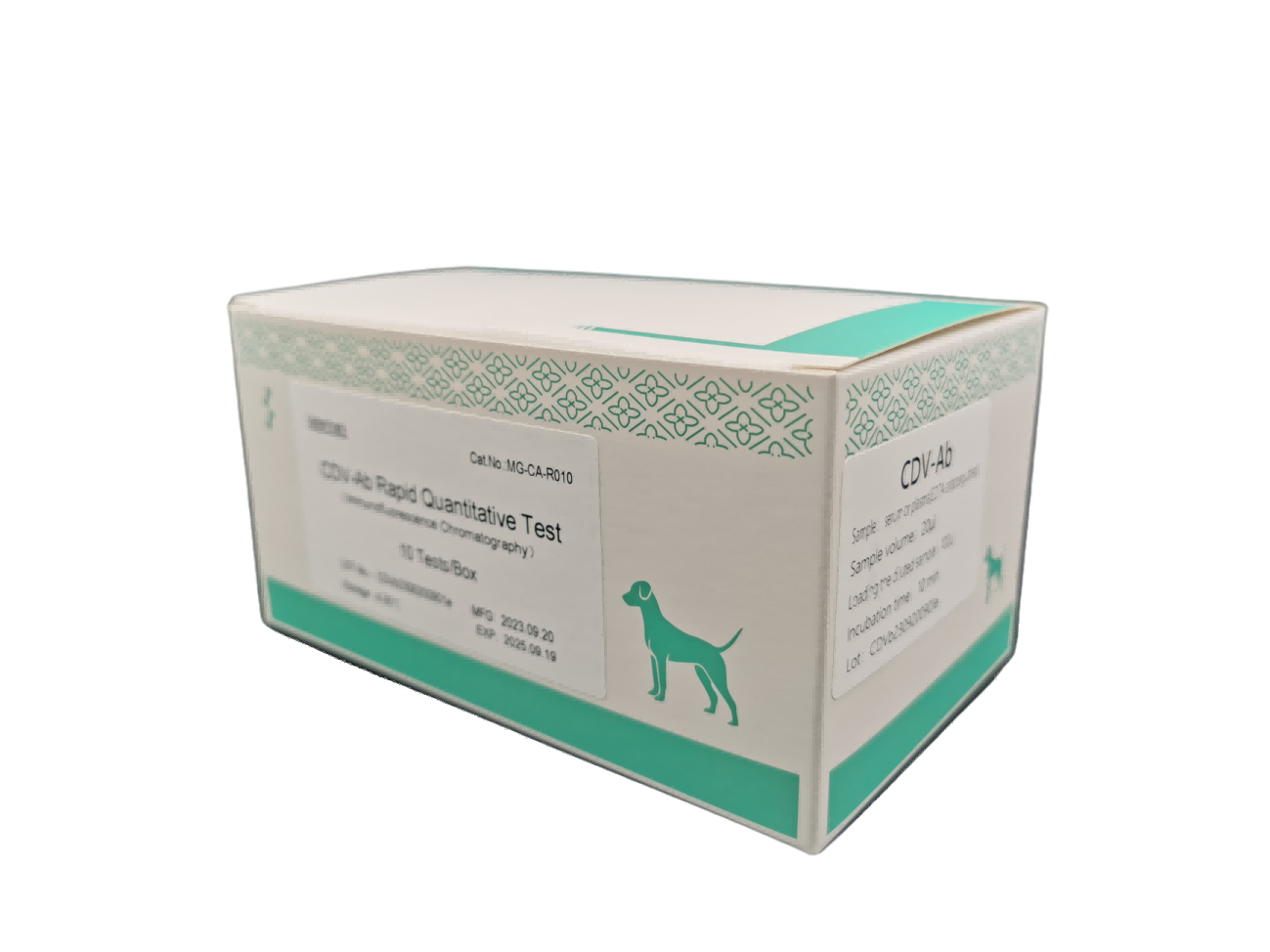



Key attributes

SPECIFICATION
10 Tests/Box
Cat. No.: MG-CA-R030
INTENDED USE
The cCys C test is a fluorescence immunoassay used with an Immunofluorescence Analyzer for the quantitative measurement of cystatin C concentration in canine serum or plasma. It is designed to assist in the diagnosis and monitoring of cystatin C levels in canines.
For in vitro diagnostic use only. Professional use only.
TEST PRINCIPLE
This test uses a quantitative double antibody sandwich fluorescence immunoassay technique. The fluorescence intensity is proportional to the amount of cCys C captured, and the concentration is expressed in mg/dL.
MATERIALS PROVIDED
10 individual sealed pouches, each containing:
Test Device
Desiccant Pouch
One ID Chip
Instructions for Use
10 cCys C Sample Buffer Tubes
10 Pipette Tips
Materials Required but Not Provided:
Immunofluorescence Analyzer
Timer
Pipette
Centrifuge
STORAGE AND STABILITY
Store the test kit between 4°C and 30°C until the expiration date.
Perform the test between 18°C and 28°C once the Test Device is opened.
Complete the test within 30 minutes after opening the pouch.
SPECIMEN COLLECTION AND PREPARATION
Suitable specimens: serum or plasma (EDTA anticoagulant recommended).
Separate serum or plasma from blood within 3 hours of collection. If hemolysis is observed, collect a new specimen.
It is recommended to perform the test immediately after collection. If testing cannot be done within 3 hours, store the specimen at 2°C to 8°C for up to 72 hours or below -20°C for long-term storage.
Before testing, bring all materials to room temperature. Thaw frozen specimens completely and mix well. Avoid repeated freeze-thaw cycles, and only use clear, non-hemolyzed specimens.
TEST PROCEDURE
Refer to the Immunofluorescence Analyzer Operation Manual for detailed instructions.
Place the Test Device on a clean, level surface.
Insert the ID Chip into the meter and click “Read ID chip.” Ensure the Test Device lot number matches the ID Chip number.
Pipette 50 μL of prepared sample into the cCys C Sample Buffer tube and mix gently. Avoid vigorous shaking and foaming.
Pipette 100 μL of the mixed sample into the sample well (S) of the test device. Avoid bubbles.
Choose one of the following test modes:
Standard Test: Insert the Test Device into the analyzer immediately, click "Start Test," and select "Serum/Plasma." The meter will automatically provide results.
Quick Test: Start a timer after adding the sample to the Test Device. Let it incubate at room temperature (18°C to 28°C) for 10 minutes, then insert the device into the analyzer and click "Start Test." Select "Serum/Plasma."
Results will display on the main screen and can be printed automatically or manually.
QUALITY CONTROL
Each cCys C Rapid Quantitative Test includes an internal control. If the internal control fails, the meter will display an error message, requiring a repeat test.
INTERPRETATION
Reference range for cCys C in canine serum or plasma:
| Product | Result (mg/dL) | Interpretation |
|---|---|---|
| cCys C | ≤ 12 | Negative (-) |
| 12 - 15 | Suspected kidney injury (+) | |
| > 15 | Indicated kidney injury (++) |
Detection range: 3.0 ~ 34 mg/dL
Conversion factor: 1 mg/dL = 0.1 mg/L
Each laboratory should establish a reference range representative of the evaluated population.
WARNINGS AND LIMITATIONS
For in vitro diagnostic use only.
Inspect packaging and labels before use. Do not use if the pouch is damaged, torn, or improperly sealed, or if the vial appears damaged or leaking.
Do not use test devices beyond their expiration date.
Use a new pipette tip for each specimen.
Technical or procedural errors, or interfering substances in the blood, may lead to erroneous results.
